App Publishing
After completing analysis and exploration, an app can be published to the app marketplace for browsing. During publishing, the system creates a snapshot of the app, saving all settings and storing them in the app marketplace. Published apps hide the creation features and primarily provide dashboard browsing. Apps in the app marketplace cannot be freely explored, but detailed data viewing, data export, and app template export can be performed based on the interaction permissions set during publishing. This article mainly introduces the relevant settings during app publishing.
Publishing Settings
Click the publish button in the app's three-dot menu to enter the publishing settings page. 
Basic Settings
Cover Image The cover image is displayed on the app marketplace card. The size should not exceed 1280*800, and the file size should not exceed 2MB. You can click to upload and overwrite the previous cover image or reset to restore the default settings. The cover image is displayed blurred, and a clear image is shown when the mouse hovers over the app card.
Watermark The watermark is overlaid on charts in PDF files exported from the app marketplace. The size should not exceed 1280*800, and the file size should not exceed 2MB. You can click to upload and overwrite the previous watermark image or reset to restore the default settings.
App Description The app's description information is displayed when the mouse hovers over the app card.
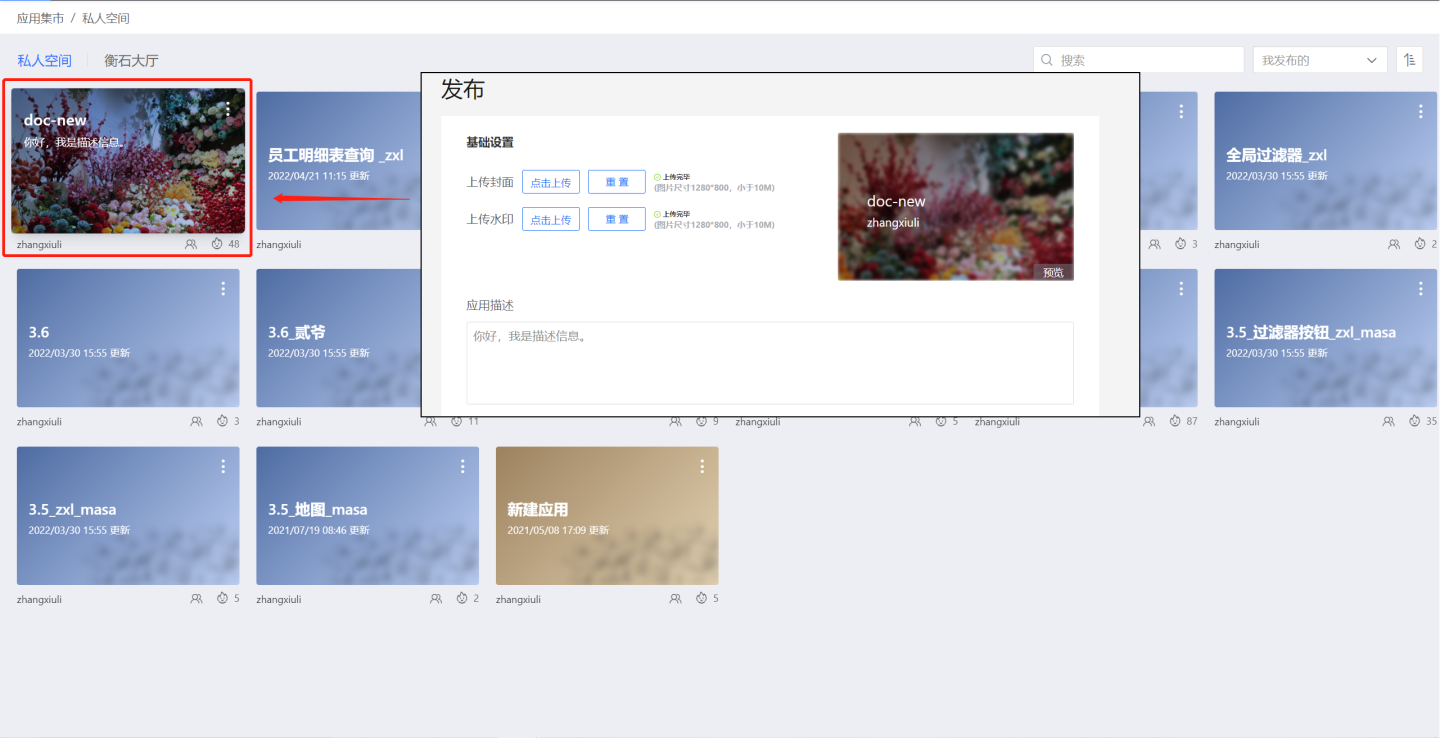
Publisher
When publishing an app, you can choose whether to display the publisher. The publisher can be the current user, the user's group, or the user's organization, meeting different publishing scenarios.
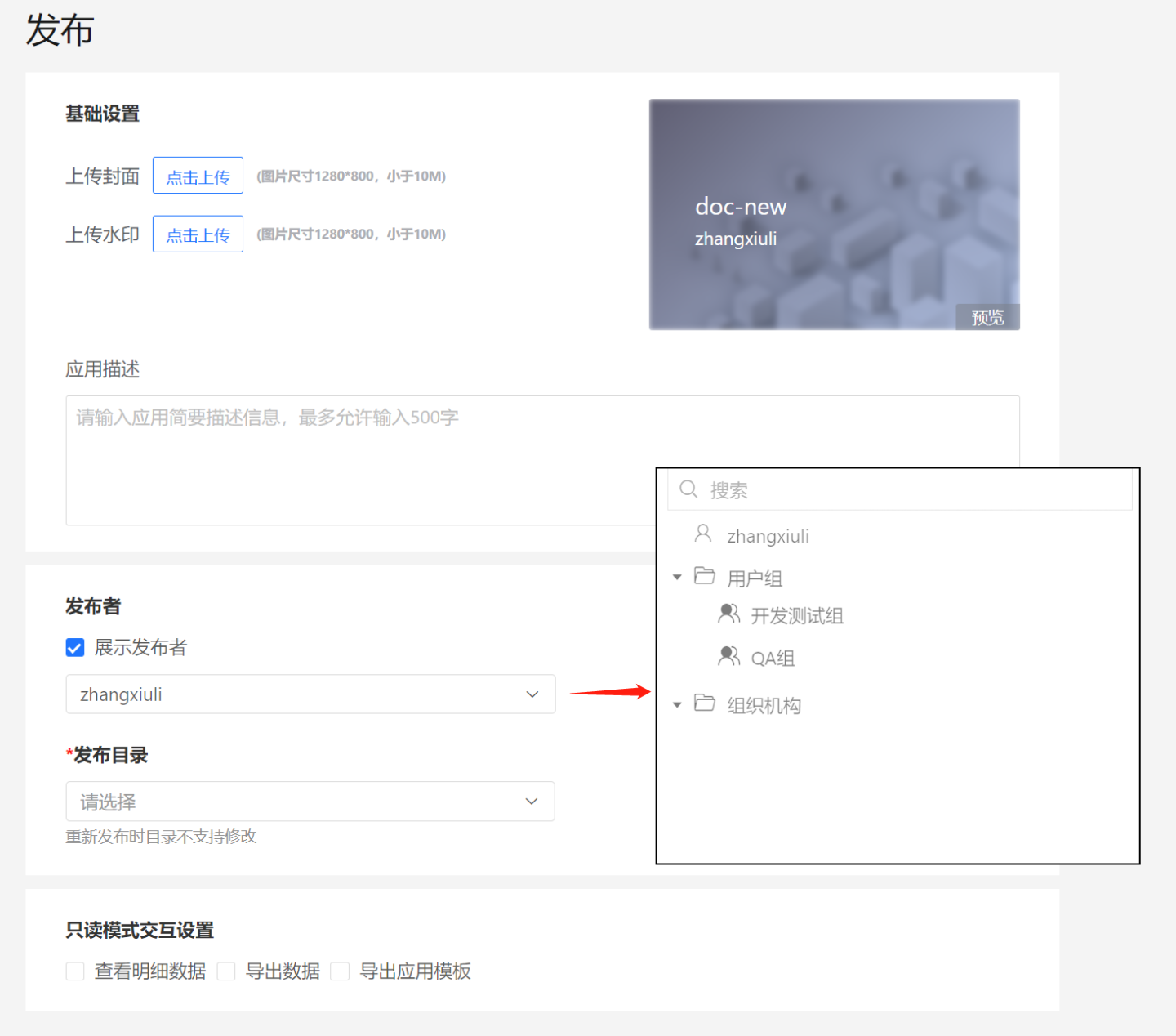
Publishing Directory
When publishing an app, you can choose a directory in the app marketplace where you have manager or editor permissions. 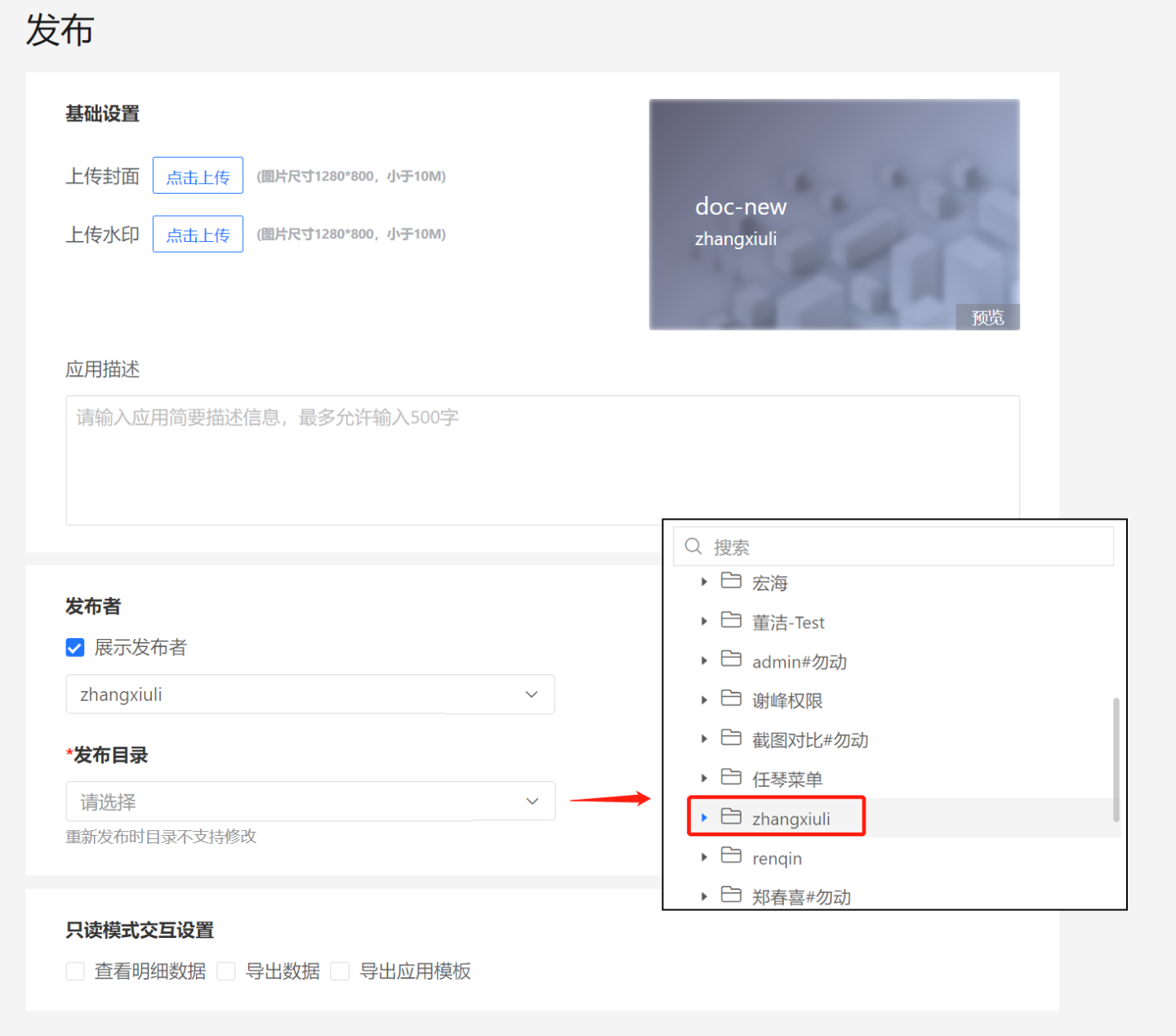
Once the publishing directory is selected, it cannot be modified. If you need to change the directory, you can achieve this through the following methods:
- Use the Move function to move the app to a specified directory in the app marketplace.
- Delete the app from the app marketplace using the Unpublish function, and then republish the app.
Read-Only Mode Interaction Settings
The read-only mode interaction settings include viewing detailed data, exporting data, and exporting app templates. You can enable these functions as needed during app publishing.
By default, the read-only mode interaction settings are empty, meaning that the published app does not support viewing detailed data, exporting data, or exporting app templates.
View Data
After enabling the view data function, detailed data for charts can be seen in the app marketplace. When each chart is opened, two entry points for viewing data are available.
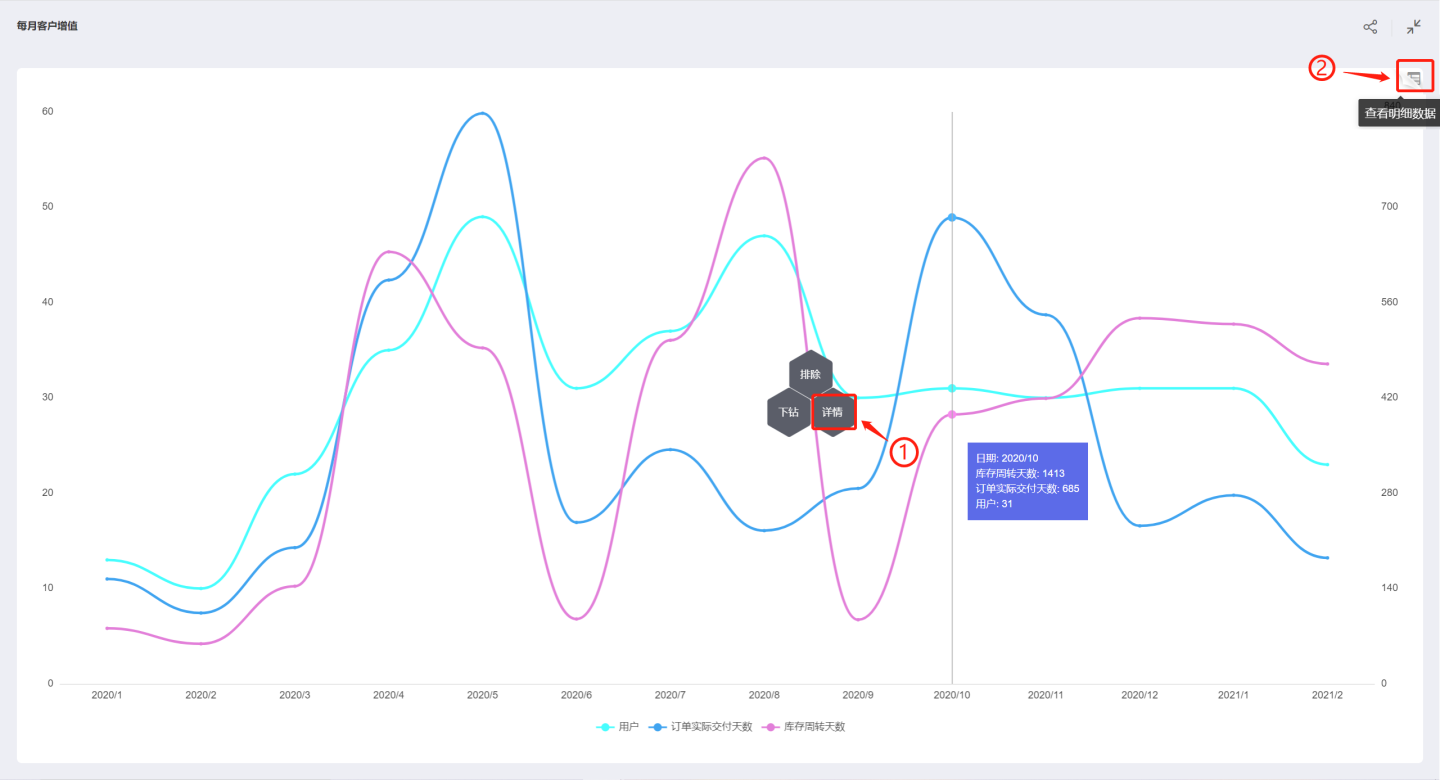
Entry 1: After opening the chart, click to reveal the Details menu, where you can view the detailed data of the current chart. This supports viewing related columns and all columns. Related columns display relevant data in the chart, while all columns include all information from the dataset used to create the chart.
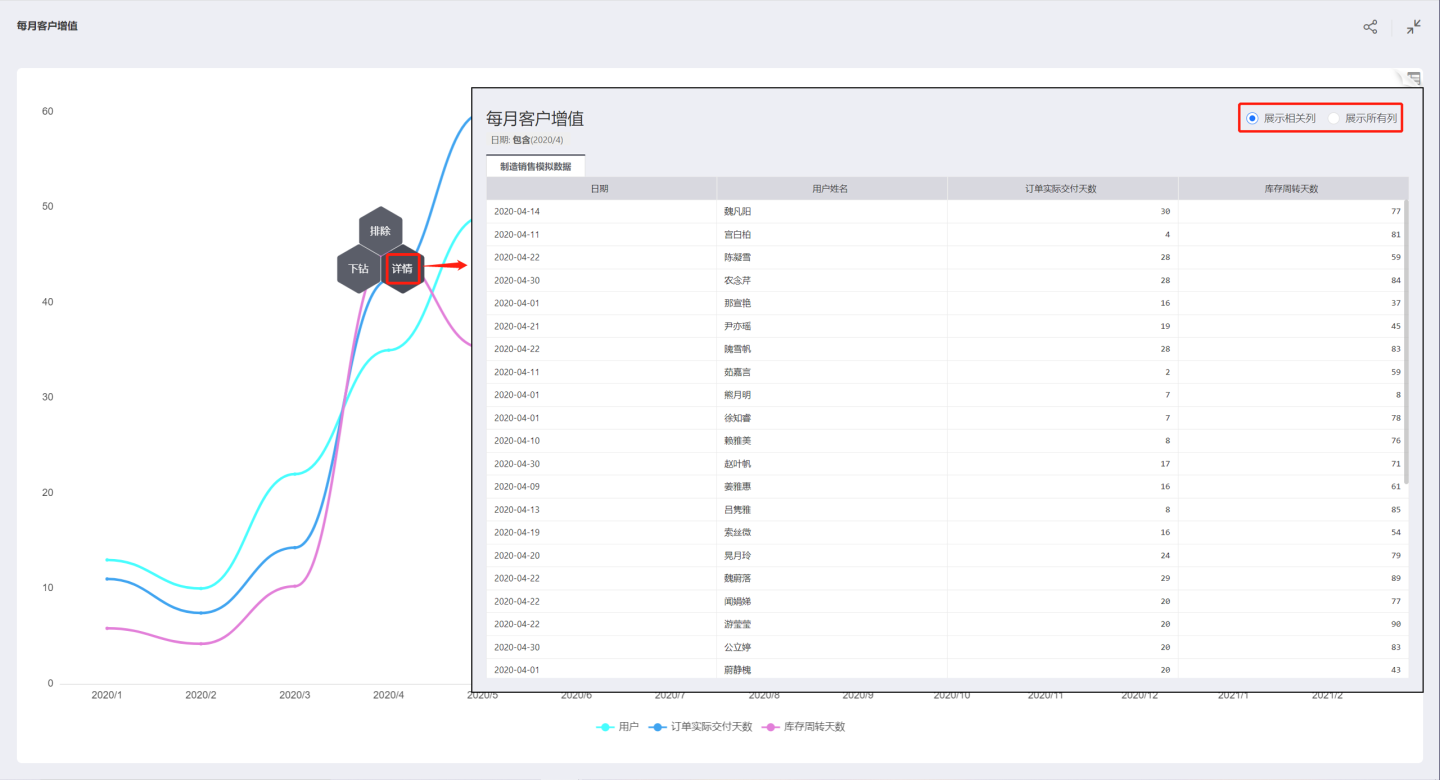
Entry 2: After opening the chart, click View Detailed Data in the upper right corner to view the detailed data of the fields used in the current chart. This supports viewing related columns and all columns. Related columns display relevant data in the chart, while all columns include all information from the dataset used to create the chart. Additionally, filtering data using filter conditions is supported.
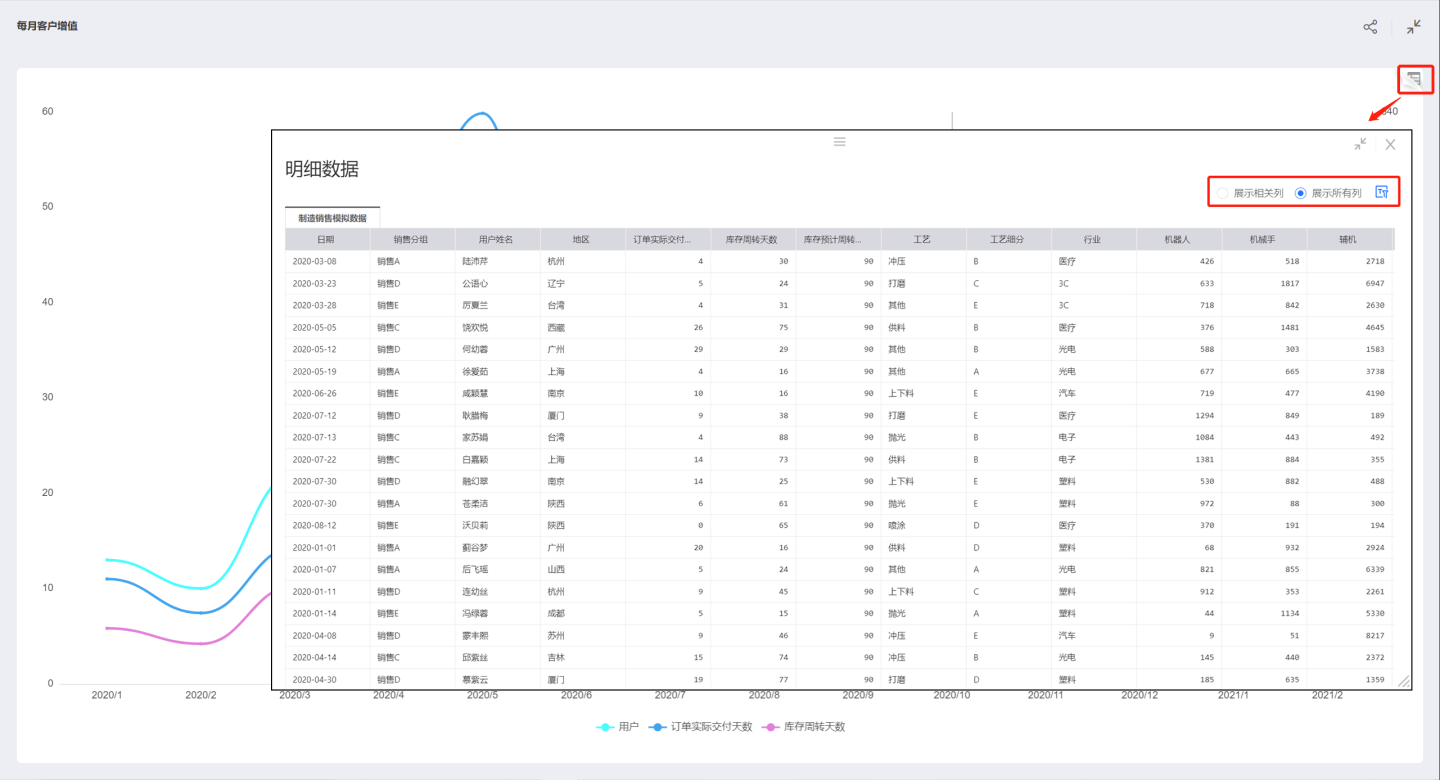
Tip
When the Chart Interaction Behavior is set to not respond, the details menu will not pop up during app publishing, and data cannot be viewed through Entry 1.
Export Data
After enabling the export data function, the published app can export PNG and PDF styles, as well as app data, including aggregated data and detailed data for charts.
App Export
When the app is displayed, click the export button in the upper right corner to reveal export options, allowing you to export the app as PPT, PDF, or aggregated data. The app export includes the content of all dashboards within the app.

Dashboard Export
When a dashboard is displayed, click the export button in the upper right corner of the dashboard to reveal export options, allowing you to export the dashboard as PNG, PDF, or aggregated data.
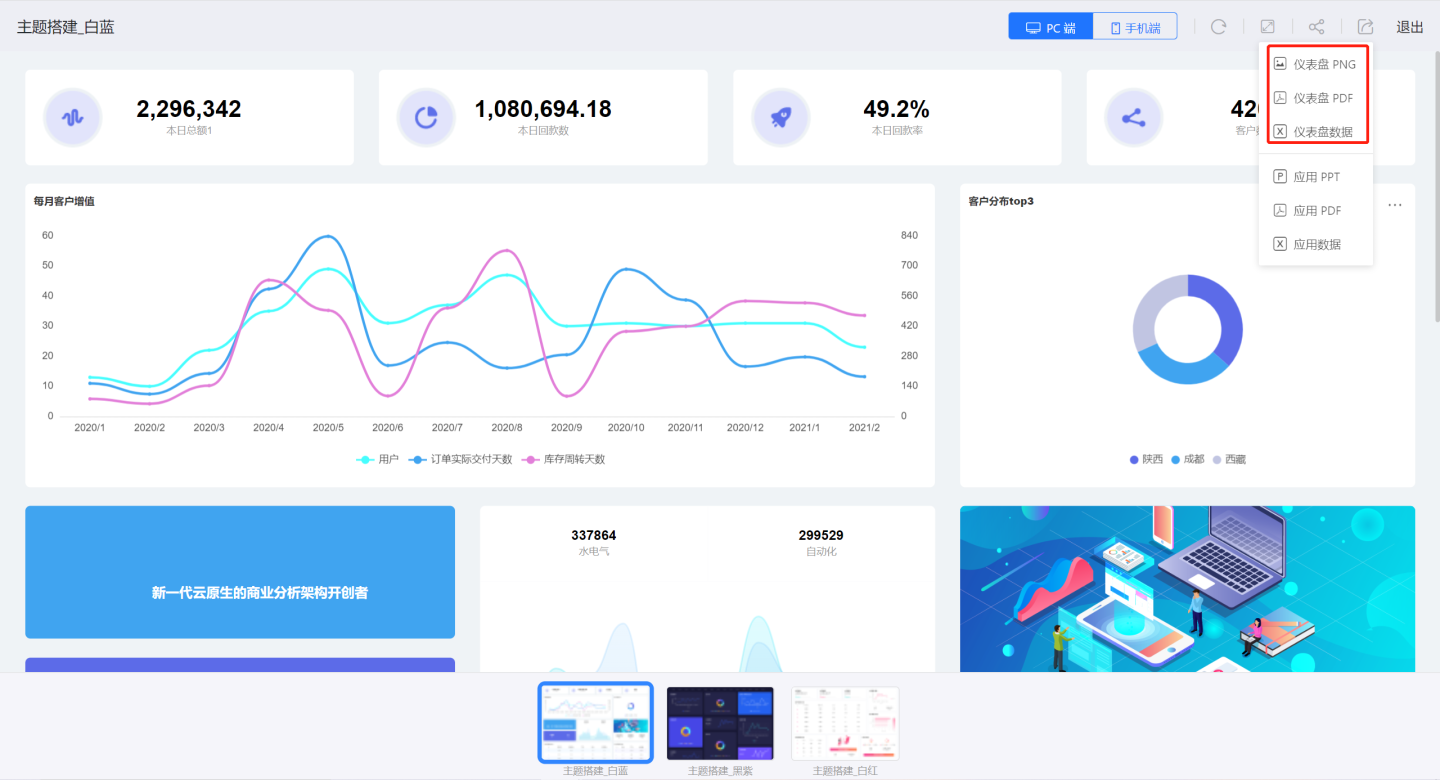
Tip
The dashboard export function only exports the currently displayed dashboard. Dashboards that are not displayed are not exported.
Chart Export
The chart export function allows exporting charts as PNG, PDF, and data.
Chart Export PNG, PDF Open the chart in the dashboard, click the export button in the upper right corner of the chart, and you can export the chart as PNG or PDF.
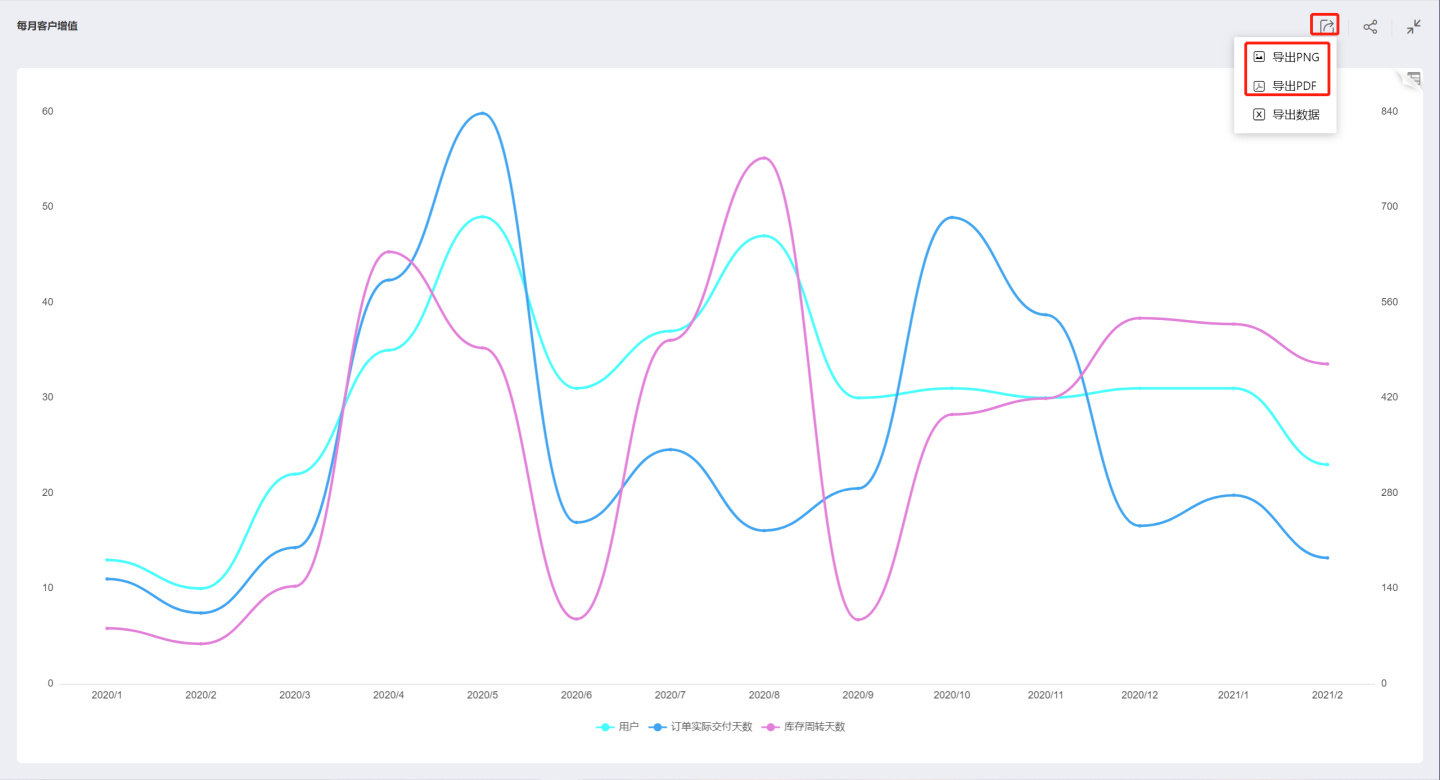
Chart Export Aggregated Data
- In the dashboard interface, export aggregated data from the three-dot menu in the upper right corner of the chart.

- Open the chart, click the export button in the upper right corner of the chart, and you can export the chart's aggregated data.
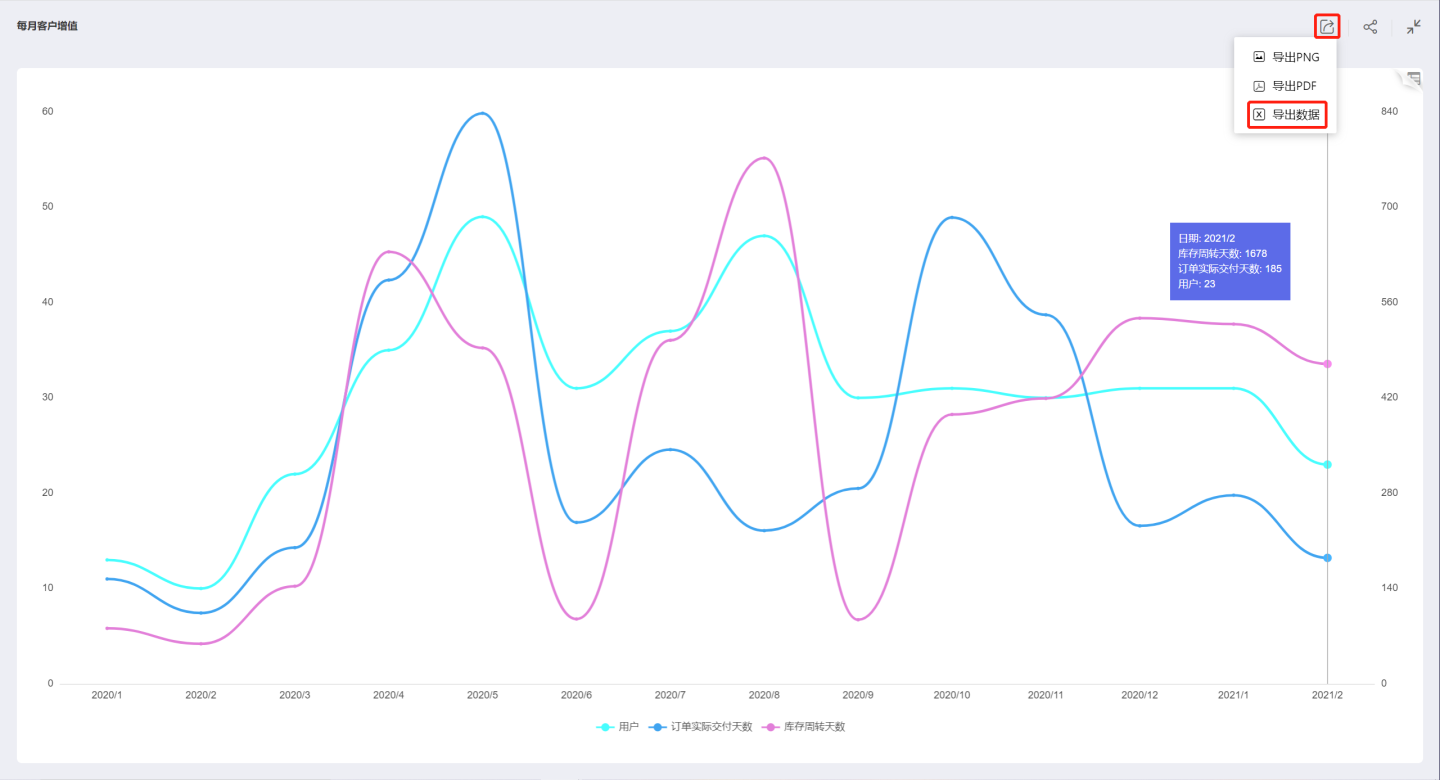
- In the dashboard interface, export aggregated data from the three-dot menu in the upper right corner of the chart.
Chart Export Detailed Data
- Detailed data for the chart can be exported from the chart details page.

- Detailed data for the chart can be exported from the view detailed data page.

- Detailed data for the chart can be exported from the chart details page.
Export Template
After enabling the export app template, buttons for creating a new app using the template and exporting the template will appear in the app's three-dot menu, allowing you to reference the app through the exported template. 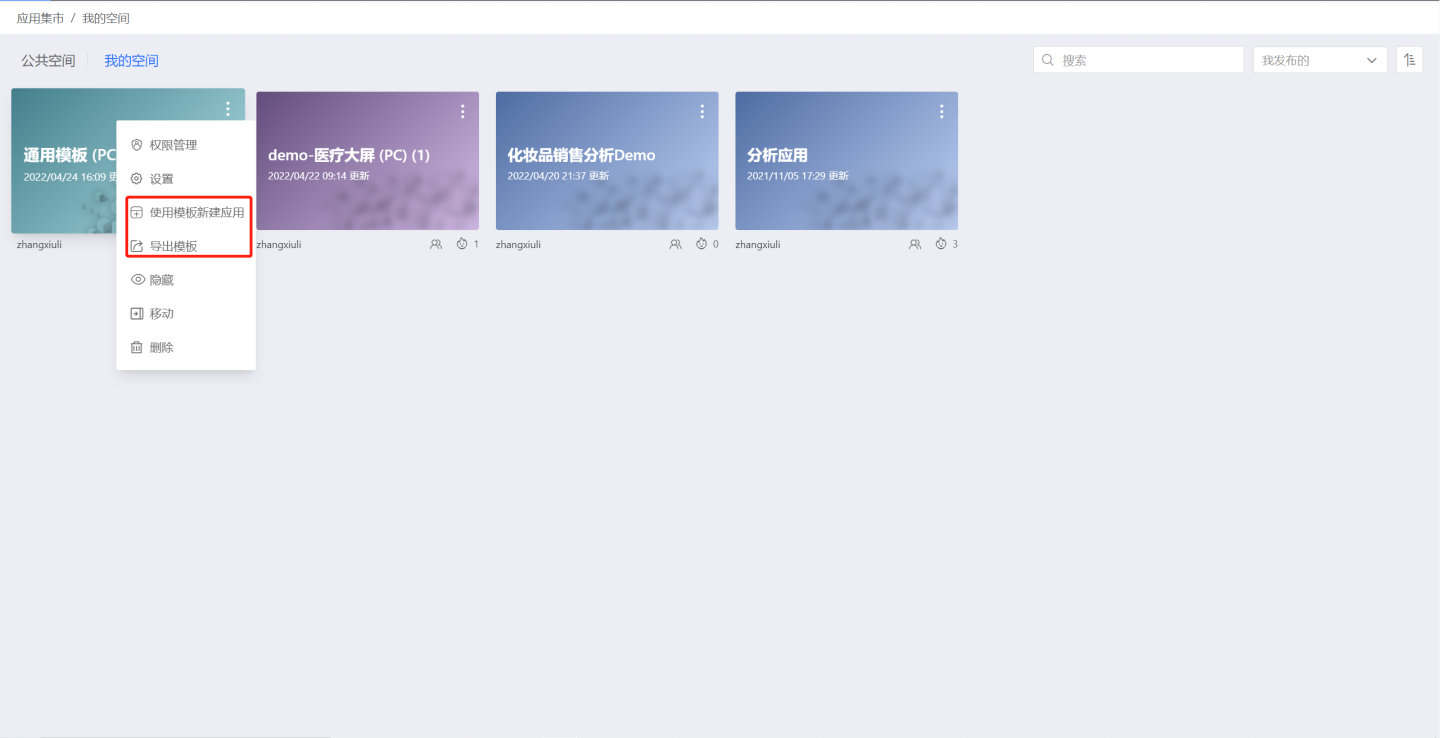
The App Template article explains how to create a new app using the exported template.
Unpublish
After an app is published, it can be deleted from the app marketplace by unpublishing. The unpublish option will appear in the app's three-dot menu after publishing. Unpublished apps or apps that have already been unpublished will not have the unpublish option in their menu.
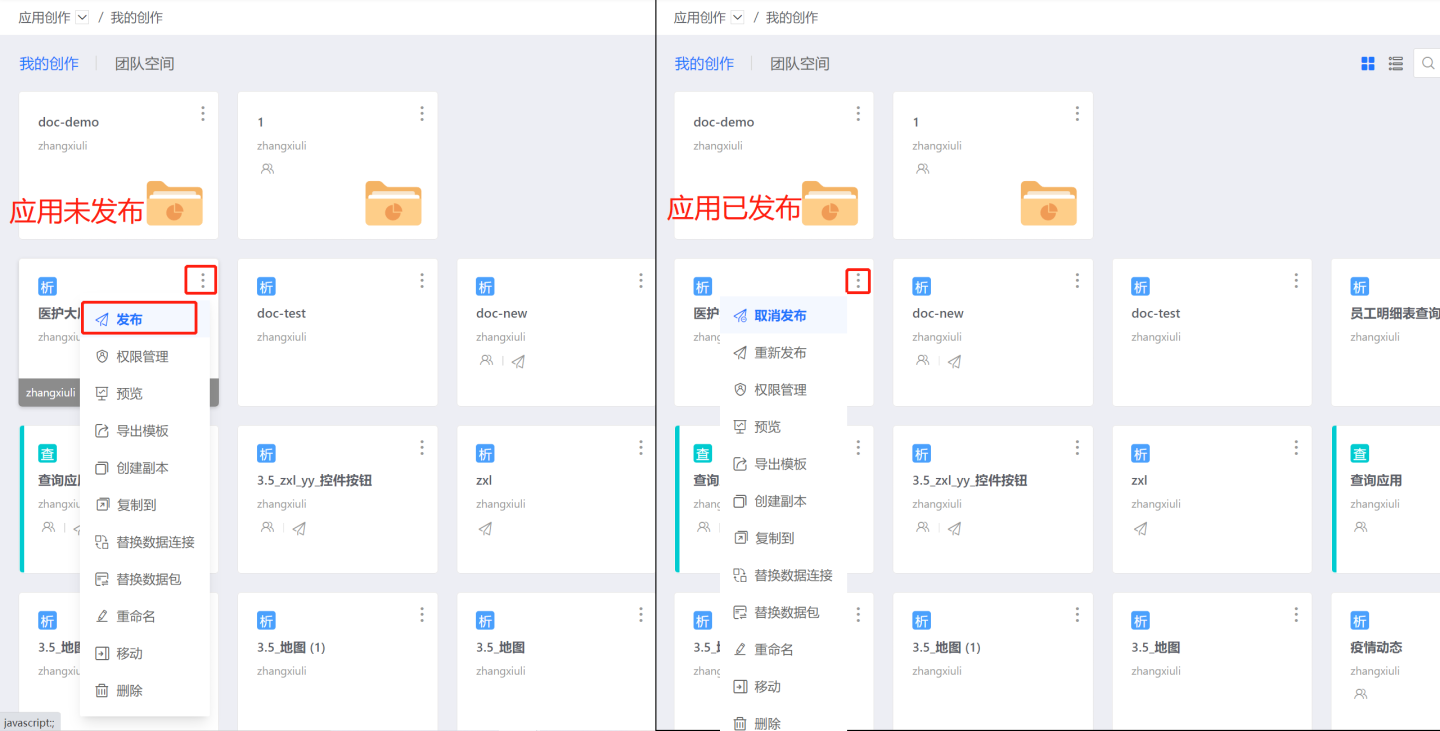
After unpublishing, the app will be deleted from the app marketplace, and other users with viewer permissions for the app will no longer see it in App Marketplace -> Published to Me.
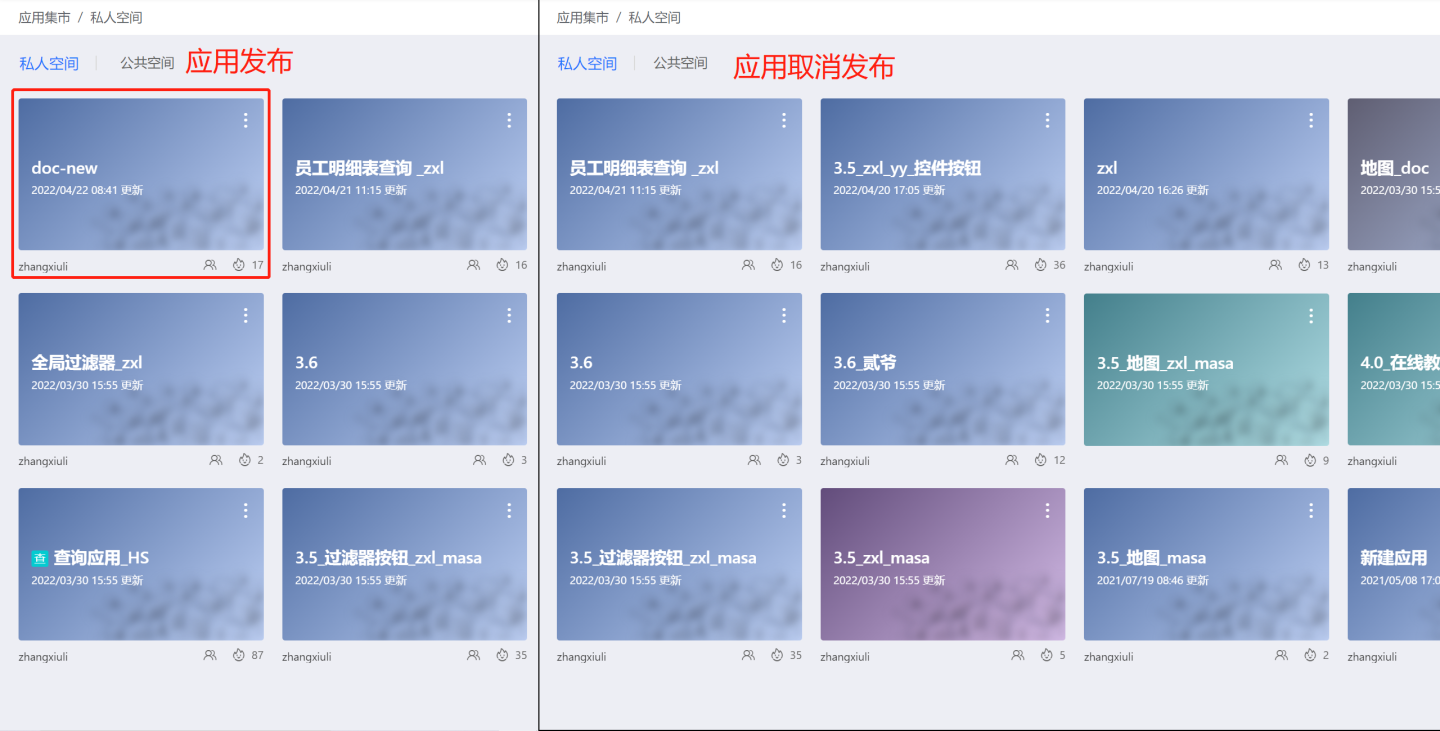
Republish
Published apps do not change with the app's content in the creation phase. When the content in the app creation phase is updated, you can use Republish to update the app in the app marketplace. The republish settings page is the same as the publish settings page, except that the Publishing Directory cannot be modified, and all other settings can be modified.
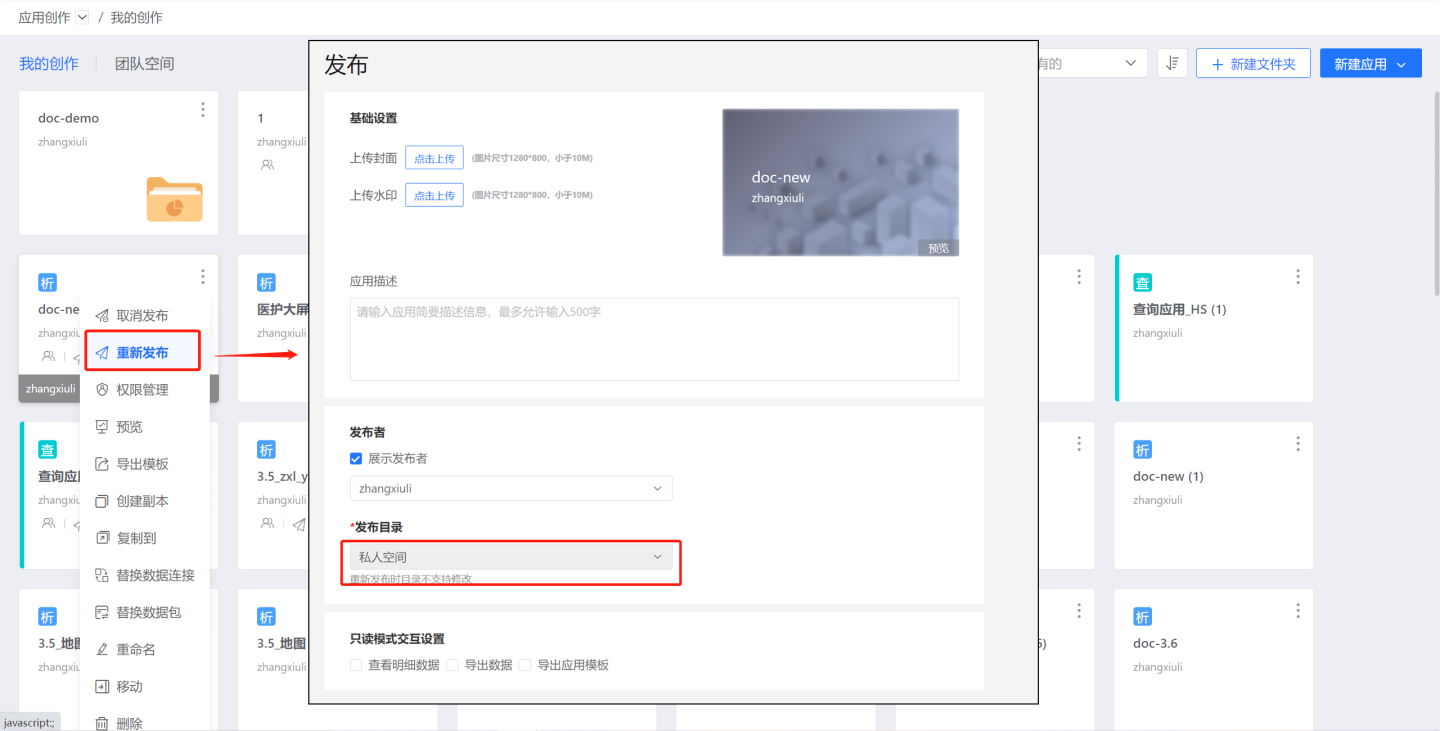
Pause Service/Resume Service
When the system is undergoing upgrades, maintenance, or fault handling, such as migrating underlying data, some published apps may be affected and display errors. In such cases, you may not want users to access the relevant dashboards.
For this situation, you can use the app pause service function. When the system is under maintenance, pause the service for the app.
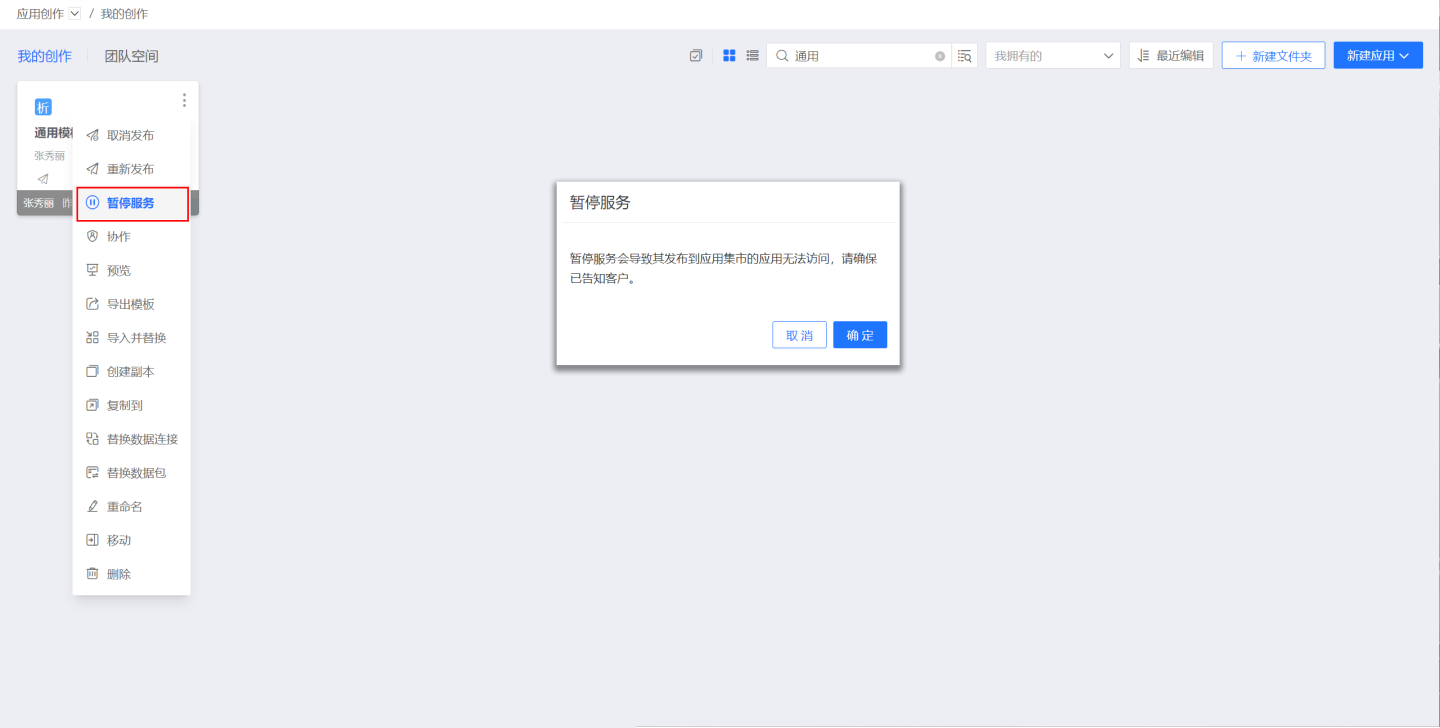
Published apps in the app marketplace will display a paused status, and when opened, will show maintenance-related messages, informing users of the app's status.
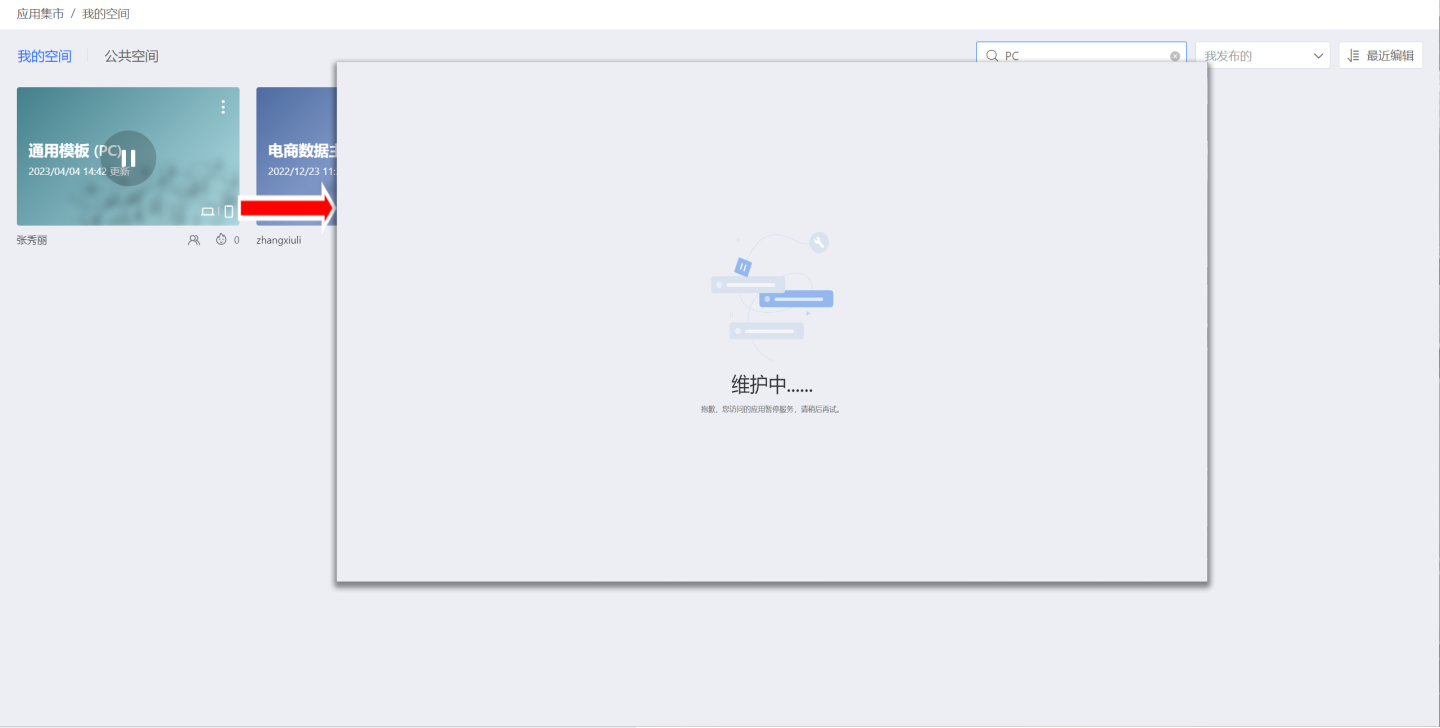
When the system's fault handling is complete, you can resume the service for the app, allowing users to access it normally.